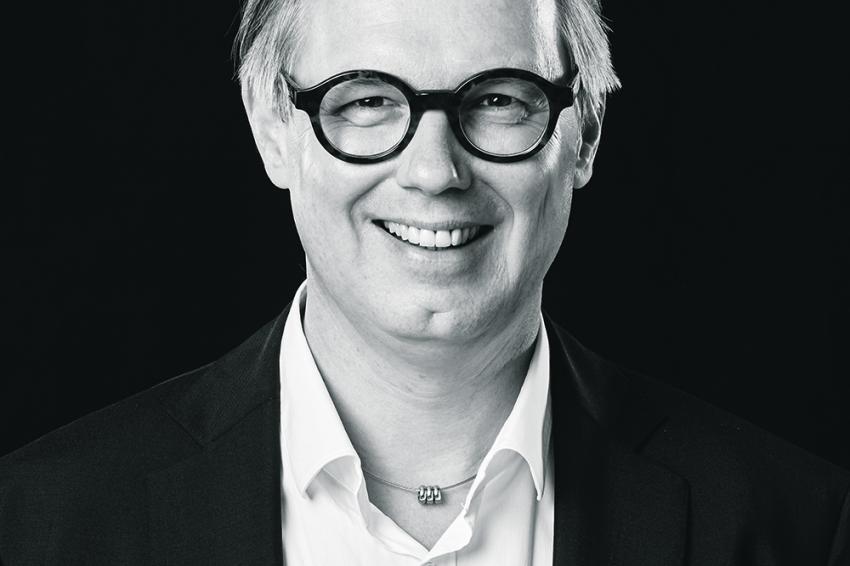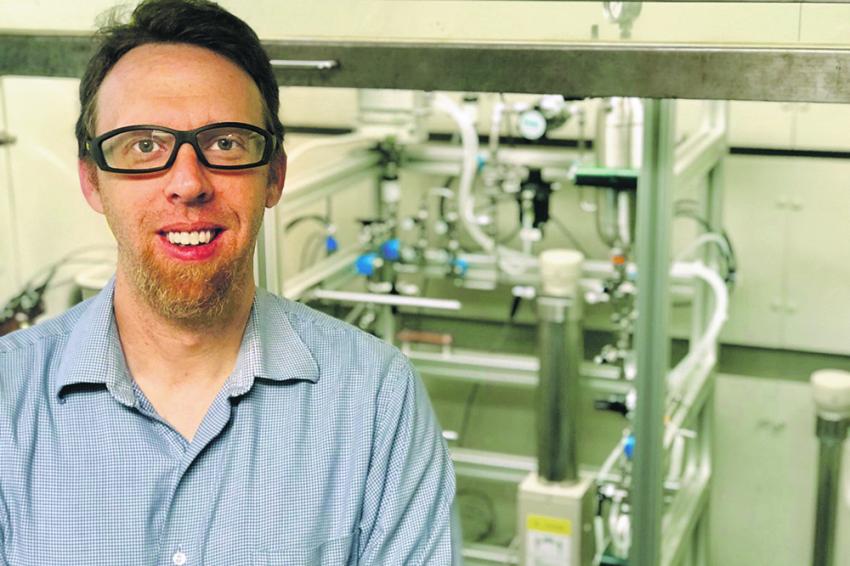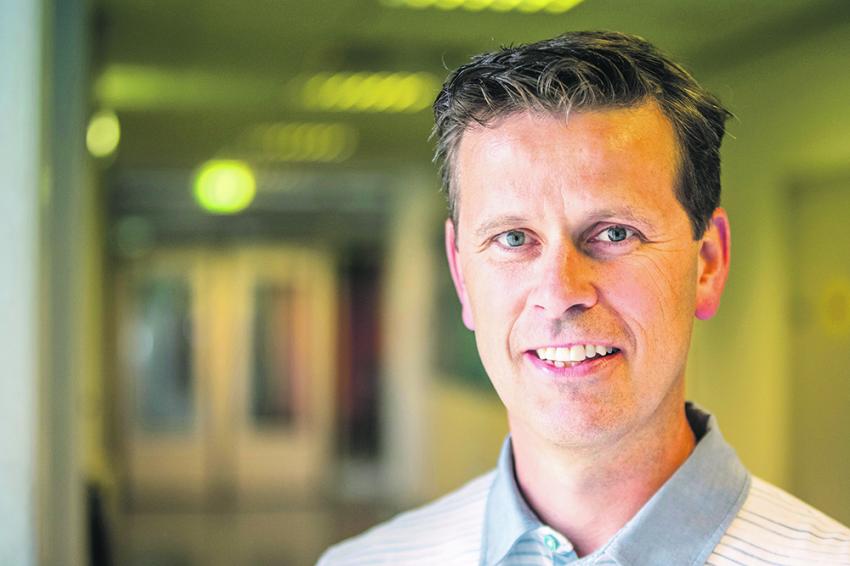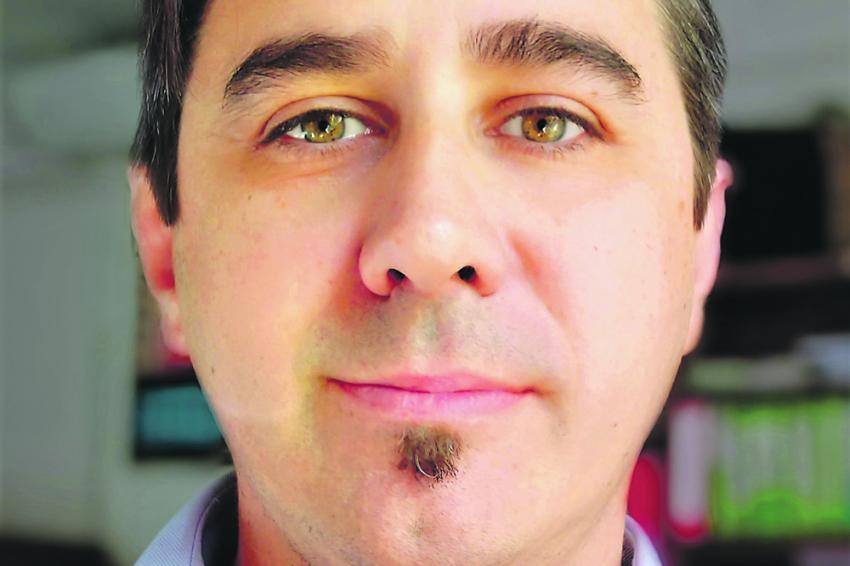Flow Chemistry - A Mature Technology still on the Rise
Experts Share Their Opinion on How to Accelerate the Adoption of Continuous Manufacturing across all Industry Sectors
Flow chemistry or milli- and micro reaction technology (MRT) is a platform that can offer enormous advantages in this respect. But MRT has not yet achieved the status in fine chemicals and active ingredient manufacturing that one might expect. What are the reasons for this reluctance?
CHEManager asked executives and industry experts dealing with flow chemistry so share their opinion on why some industry sectors are so reluctant in adopting continuous production processes. We wanted to know:
- How would you define the essence of flow chemistry?
- Which factors are affecting the global flow chemistry market and the implementation of flow chemistry in the industry?
- Should there be simplified approval procedures for flow chemistry processes or plants, and is the technology sufficiently covered in academic education?
Read the insightful answers of the experts here.
A Technology with Enormous Potential
Philippe Robin, CEO and co-founder, Alysophil
(1) Flow chemistry is a biomimetic process. It reproduces material transformation observed in nature. Nature is known to employ the most efficient process. Developing the chemical industry with intensive use of flow chemistry will enable humanity to make huge progress in the production of goods, in terms of frugality, environmental footprint and safety. In addition, the size of equipment, the seamless scale-up and on-demand production are the kind of fits that are particularly appropriate for fine chemical production
(2) So far, in Alysophil’s experience, the industry approaches the implementation of flow chemistry for various reasons.
First, o reach enhanced industrial performance versus batch process (yield, conversion). Going beyond in performance, motivation to use flow chemistry is to improve safety. These processes concentrate at the same place, at the same time, much lower reactive compounds vs batch. In the case of process deviation leading to reaction’s runaway or leaks, the impact is restricted in a tiny danger zone vs batch. Then you may think to re-implement forbidden reactions: the ones that are very efficient but also very dangerous to master in batch. For instance, using of phosgene, which can be produced on demand and directly used in a subsequent reaction.
Second, considering environmental footprint examples are more and more focused on solvent-free reactions, energy performance, waste reduction, highly efficient new synthesis by using biosourced materials.
Third, the investment and running costs are a factor of differentiation vs batch. For many applications, flow chemistry costs might be 30-50% lower.
Forth the size of the equipment is another key point. Imagine if a surface of 15sqm could host a process producing 3000 metric t/y. This is definitively not lab scale but really an industrial one on a very tiny area.
Alysophil is convinced that flow chemistry may play a major role to invest in new chemical facilities in Europe. Such decisions may set a new balance in chemical production between Asia and Europe, which will strengthen the supply chain.
(3) Simplified procedures are not necessary as the current regulations are already taking into account the mass involved in processes. So basically, the current regulations are very compliant with flow chemistry. The technology is not really new, but academics have formerly focused their courses on what batch industrials hoped. Beyond the technology, we need a new way of thinking about synthesis imagination, taking into account the capabilities of flow chemistry in terms of catalysis, photochemistry, flash chemistry and low lifetime intermediaries. That’s the reason why Alysophil develops artificial intelligence and use for chemistry.
A Growing Need for Modular Flow Chemistry Platforms
Shawn Conway, Director of Engineering, Cambrex High Point
(2) Batch production has traditionally been – and still is – the mainstay of the pharmaceutical manufacturing sector, largely due to quality and regulatory requirements. Continuous flow chemistry had typically been reserved for niche applications, such as highly energetic and/or hazardous reactions where continuous processing allows risks to be managed to avoid catastrophic events as well as expensive infrastructure requirements.
Flow chemistry has become more widely accepted throughout the pharmaceutical industry for several key reasons in addition to process safety, namely volume and cost, as well as quality and reduced development timelines. An increase in the number of highly potent and/or orphan drugs has led to a need for a nimble, smaller-volume capacity model. Existing large batch processing infrastructure is not well suited for these applications for both capability and cost considerations. Developing, designing and implementing modular flow chemistry platforms that can be customized serves this growing need in the industry.
Flow process scalability also allows for fewer scale-up cycles in a development lifecycle, reduces investment cost and speeds time to market for successful drugs. Furthermore, flow chemistry has been shown to provide superior quality for a range of challenging synthetic steps such as cryogenic organolithiations. The ability to tightly control the physical parameters has been shown to afford more consistent products with fewer impurities or unwanted by-products, which can reduce development efforts required to extract, isolate and purify target compounds. This provides a more efficient and streamlined process, and can also reduce timelines, material and energy requirements, enhancing process sustainability.
Recognizing these advantages, the pharmaceutical market has invested accordingly in the technologies, triggering a corresponding investment and growth of process development and equipment providers to enable these powerful technologies.
Tailored Hardware for Demanding Chemistries
André de Vries, Commercial Director, Innosyn
(2) Lately, also the fine chemical industry and the small molecule pharma arena has adopted so-called flow chemistry as one of their focus points to improve manufacturing processes. While the continuous manufacturing of bulk chemicals is state of the art, it faces some challenges in fine and pharmaceutical chemicals, which prevent its introduction on a broad basis.
This is due to the fact that fine, pharma, and agro chemicals are manufactured in multi-purpose plants; are complex molecules with many functionalities (many steps / unit operations); are relatively small volume compounds; and that they often have a limited life cycle.
In fact, when the first scalable process is required, in many cases there is no revenue or guaranteed market approval.
Moreover, speed to market is key for the development stages of the pharma/agro product, hence a limited process development time is critical, as well as the flow chemistry equipment being readily available. For the latter, we at Innosyn have adopted selective laser melting (SLM), or 3D metal printing, as enabling manufacturing technology to create the “best fit for purpose” flow reactors and mixers. 3D metal printing is capable of printing full dense objects in any metal that can be welded, and it provides almost an unlimited freedom of design.
Typical useful chemical reactions to perform preferably in a continuous mode can be divided into two main categories. First, for very fast, highly exothermic reactions, such as nitrations, DiBAl-H reductions, and metalorganic reactions, we have designed, “printed”, and applied flow reactors with a relative narrow zigzag channel having superb heat transfer coefficients (U up to 10.000 W/m2K). As additional feature, 3D metal printing enables to incorporate thermo couple inlets at any point of interest, and, if appropriate, also multiple injection ports of the highly reactive reagent.
Second, when applying hazardous reagents in relative slow chemistry, e.g. an SN2 substitution with sodium azide at sterically hindered alkylbromides, we have produced rather large flow reactors (up to 500 mL) with about 1 cm wide channels containing over the full length SMXL elements to secure narrow residence time distribution.
In practice one can now design, “print”, and apply within 1 month a new tailored piece of equipment for any type of challenging chemistry, and if required get into an iterative mode to optimize the flow chemistry hardware.
The goal for the chemical process development community is to get the best process in place (for that moment). This could involve flow chemistry, especially for those highly reactive and exothermic reaction steps, and the reaction steps using hazardous reagents, but implanting flow chemistry as such is not the goal. This is one more reason why the implementation level of flow chemistry in the fine/pharma/agro arena is rather low.
Another important argument for flow chemistry is its robustness. A plant manager would be interested to use flow chemistry, provided the development team can overlay a robust process, with continuously the same quality output.
Cooperation, Not Competition
Charlotte Wiles, CEO, Chemtrix
(2) Continuous manufacturing (CM) is gaining global importance, boasting improved process control and reduced operating costs, leading to increased manufacturing profits and competitive edge. One of the most significant challenges for CM has been a lack of publicity around the technology’s implementation industrially. This is changing with CMO’s/CDMO’s now promoting their capabilities as outsourcing partners for CM; but still, details on what is achieved – and how – are less routinely disclosed.
An often-underestimated part of introducing a new technology into a company is how to navigate the transition from its use in a project to a process. This means a shift from a chemists‘ domain to one led by chemical and mechanical engineers, then beyond to plant operators and quality personnel for product release. Our view is that a multidisciplinary approach is required to achieve the project goals of safe, efficient, cost effective manufacturing and should involve a mixed team from the outset, obtaining the much needed “departmental buy-in” to accept a “new way” of doing something.
Whilst benefits such as increased process safety, reduced energy consumption and waste generation are widely noted, gaps remain in how to translate these advantages into a clear business case – as a result, we saw in the past several process development activities prematurely stop. The future of CM as a production technique rests on appropriate training, awareness of the benefits it can bring, together with its implementation early in product and process development. It is vital that disciplines are combined to identify opportunities for process improvement when assessing use of CM for manufacturing capabilities. This is not a field looking to compete with batch and existing hardware but to complement it, through access to new processing possibilities. The fear of regulatory reluctance has become less of a barrier for companies in the past 5 years, with the US FDA publicly stating their support for CM – this has led to more early stage process development activity.
Recent global events will undoubtedly change the way we manufacture fine and specialty chemicals, through to APIs, with supply chain management favoring in-house local and distributed manufacturing models. When combined with PAT/model-based automation, modular and flexible CM will increase productivity in companies focused on complex formulated products such as pharmaceuticals, chemicals and personal healthcare products.
Cooperation, not competition, is key to successful application of emerging technologies! It does not need to be “batch or flow,” “R&D chemist vs. scale-up engineer” and you do not have to do this alone. We advise learning from the experience of those in the equipment and CDMO space further to accelerate implementation of CM.
An Opportunity to Innovate Chemical Processing
Dirk Kirschneck, CEO, Microinnova
(1) I see the essence of flow chemistry in the opportunity to innovate chemical processing in two main ways. The first opportunity is to intensify processing by optimizing space-time-yield, leading to fast, efficient and safe chemical processing. The second opportunity is to work with modular plants that have some on-module flexibility, for example realized by means of 3D-printed reactors. The main driver is to minimize the time-to-produce.
(2) I expect a strong impact of Covid-19 on the flow chemistry and continuous processing community. Governments see that parts of the processing industries are key resources. The ability to have access to modular and flexible pilot plants and manufacturing units offers the option to take action, especially in crisis situations. Sourcing medical diagnostics, treatments and items such as reagents and intermediates are critical for the crisis management. The response to a dramatically changing demand contains a high value, especially in cases where the supply from other parts of the world is not stable. Modular plants using continuous manufacturing can deliver a minimized time-to-produce.
(3) I think that a two-step strategy makes sense. Engineered modules can be delivered with a set of safety relevant documents by plant construction companies. This can be seen as a pre-HAZOP (short for hazard and operability) analysis, which enable the operator to speed up their HAZOP analysis. Another aspect is the existence of reduced worst-case scenarios. If the active volume can be reduced by a factor of 10, especially in the case of hazardous reactions, new safety concepts can be realized. These new opportunities should lead to simplified approval procedures, enabling the industry to react quickly on market opportunities and, therefore, increase the competitiveness.
A Fast Road to Innovative Production Routes
Luigi Vaccaro, Professor, Laboratory of Green Synthetic Organic Chemistry, Dipartimento di Chimica, Biologia e Biotecnologie, Università di Perugia
(1) If I think of flow chemistry, the first concepts that come to my mind are innovation, efficiency and – above all – opportunity.
Mastering flow technologies to achieve a chemical process opens a fast road towards a proprietary access route to a desired target material but also to the unquestionably unparalleled optimization of the process in terms of energy, safety and chemical efficiency.
Finally, flow chemistry is an opportunity of incalculable value for academics and industrials to invest in something innovative and capable of creating new science, different professionals and job positions. The opportunities that at the same time involve fundamental and applied research are rare, especially if they can lead to cultural and economic leadership, as flow chemistry can do.
(2) As an academic and as a non-expert of the actual complexity of the economic issues of global chemistry markets, the cost of flow equipment certainly seems to be the main element influencing the actual implementation of this technology. Being fully convinced of the capability of flow technologies of delivering highly efficient processes, I tend rather to focus on the cultural barriers related to its use. We need more professionals who are able to know and exploit the strengths of flow chemistry and to make the technology transfer to real cases more evident and immediate.
(3) There are excellent scientists working at the development of flow technologies for different chemical sectors. Mostly, these activities involve PhD students and more advanced scientists while teaching at an undergraduate level is more limited, but it would be important to present this technology to this audience. Master programs could be organized as a joint effort of universities and companies to include flow chemistry in the curricula.
A Now Well-Established Technique
Duncan Guthrie, Managing Director, Vapourtec
(2) Flow chemistry has shifted in the past decades from being a novel field only a few academics were working in, to become an enabling technique for the wider scientific community.
Continuous flow processes allowed scientists of all backgrounds to achieve a better understanding of their chemical reactions. Without heat or mass transfer limitation and with precise control of key reaction parameters (such as temperature, mixing and residence time), new findings have reshaped our existing knowledge previously obtained from round bottom flask chemistry. As flow chemistry expertise built in their companies, more scientists were curious and started to work in continuous flow.
As the scientific knowledge increased, our systems had to become more sophisticated to rise to the demands from scientists. High modularity and the ability of running automated reactions with integrated analytical instruments, have also been key factors to ensure more than 500 Vapourtec systems working today in both academic and industrial laboratories.
As a well-established platform, different industries have taken advantage of working in flow for their projects. Accuracy, flexibility, ease of scaling up and automation opened windows for increasing R&D throughput in labs worldwide.












